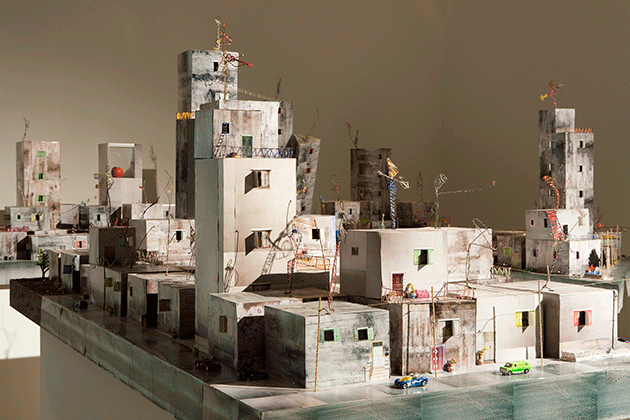Adam Shatz, contributing editor at the
London Review of Books, recently published an excellent
essay ("Writers or Missionaries?") in
The Nation that, among other things, took on the critique of Orientalism that Edward Said launched in the late '70s, and that continues in full force in academic studies of the Middle East. I first met Edward Said in 1977 and met up with him several times since then, in Austin, Ithaca, Egypt...I've read and absorbed and taught much of his work and and used it extensively in my own. And yet...I find what Shatz has to say about where it has evolved, into a kind of orthodoxy, to be quite salutary and bracing, and needed. (And I'll be teaching parts of Said's
Covering Islam in class this week.)
And yes, it mentions the kufiya, in the context of Palestine solidarity.
"Writing about the region, never an easy undertaking, is likely to become
still more difficult.
I am not sure whether the most influential
current of oppositional thinking about the Middle East is equipped to
deal with the changes the region is undergoing. I am referring to the
critique of Orientalism that Edward Said initiated. This style of
thinking was formative for me, but I fear that it has congealed into an
orthodoxy; and, as George Orwell wrote, “orthodoxy, of whatever colour,
seems to demand a lifeless, imitative style.” That we are now able to
have a more open conversation about Palestine, that students are
mobilizing against the occupation, is welcome; but Palestine is not the
Middle East, and it seems peculiar, if not myopic, to talk about
Palestine as if it were insulated from the rest of the region. And while
it is understandable that young American students are particularly
concerned about their government’s policies in the region, these
policies do not wholly determine its shape and direction. America’s
power in the Middle East has weakened, though not in favor of forces
that most of us would consider progressive. Today, we are witnessing a
tacit alliance of Israel, the military regime in Egypt and the Gulf
states—particularly Saudi Arabia—against Iran, with which the United
States, in conflict with its own regional allies, is seeking
rapprochement. The latest Israeli offensive in Gaza is a measure of how
marginal Palestine has become to the agenda of Arab states...
Today, it seems to me,
Palestinians are for the radical Western left
what Algerians were for Third World–ists in Vidal-Naquet’s day:
natural-born resisters, fighting not only Israel but its imperial
patrons, as much on our behalf as theirs. That is the role assigned to
them in the revolutionary imagination.
Like the kaffiyeh worn by anti-globalization protesters, this Palestine is little more than a metaphor. Palestine is still “
the
question” because it holds up a mirror to us. “Too many people want to
save Palestine,” one activist said to me. But
it could just as well be
said that too many people want to be saved by Palestine...
Enormously liberating when it was developed,
the critique of Orientalism
has often resulted in a set of taboos and restrictions that inhibit
critical thinking. They pre-emptively tell us to stop noticing things
that are right under our noses, particularly the profound cleavages in
Middle Eastern societies—struggles over class and sect, the place of
religion in politics, the relationship between men and women; struggles
that are only partly related to their confrontation with the West and
with Israel. Indeed, it is sometimes only in those moments of
confrontation that these very divided societies achieve a fleeting sense
of unity.
The theoretical intricacy of academic anti-Orientalism, its
hermetic and sophisticated language, sometimes conceals an attempt to
wish away the region’s dizzying complexity in favor of the old,
comforting logic of anticolonial struggle. Anti-Orientalism will
continue to provide a set of critical tools and a moral compass, so long
as it is understood as a point of departure, not a destination. Like
all old maps, it has begun to yellow. It no longer quite describes the
region, the up-ender of all expectations, the destroyer of all
missionary dreams.










